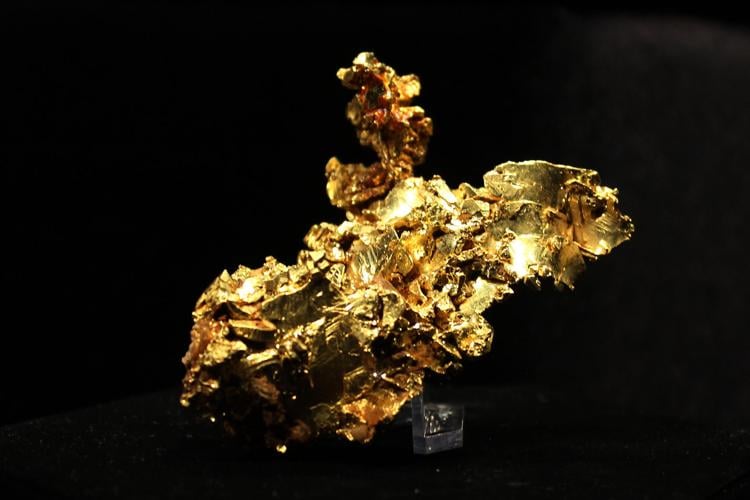You don’t have to fight the crowds at the gem show tents to see specimens of gold, azurite, pink morganite, beryl, tourmaline, fluorapatite, babingtonite, wulfenite, bornite and exceedingly rare spangolite.
Specimens from the “Harvard Collection” are on display at Flandrau Science Center, beginning Saturday and continuing to the end of the year.
The amazing minerals were collected by the Mineral and Geological Museum at Harvard University over a span of 232 years, beginning in 1784 at the direction of John Adams.
As a result of its longevity, it has one of the best, if not the best, collection of minerals from the Northeast of any museum in the world.
Kevin Czaja, the research and curatorial assistant who accompanied the collection to Tucson, said he thinks Harvard’s is the best, though the folks at the Smithsonian would disagree.
Czaja visits Tucson yearly to do some specimen hunting for the museum and usually brings a small display of its riches to the Tucson Gem and Mineral Show.
“This is Herculean compared to what we normally do,” he said.
Instead of personally escorting the gems, this time he shipped them with Brink’s security company.
Among the Northeastern treasures on display at Flandrau are fluorescent minerals from the zinc and manganese mines of Franklin, New Jersey, where more than 300 varieties of mineral have been unearthed over the centuries.
Manganese activates the fluorescence of the rocks and they are displayed in a case that can be illuminated in ultraviolet light, which reveals their brilliant and varied colors.
The biggest specimen in the display, weighing in at 150 pounds, is the “Fleur de Lis” — a deep-red elbaite (tourmaline) crystal, cradled by giant crystal specimens of albite and quartz.
A historical display features the transcript of the trial of Harvard chemistry Prof. John W. Webster for the murder of Dr. George Parkman.
Czaja said Webster was the first American to be convicted of murder using circumstantial evidence. He and Parkman had quarreled over the museum’s finances. Some of Parkman’s remains were later found in the building’s furnace; some bones were found in specimen drawers.
The special exhibit and the permanent University of Arizona Mineral Museum exhibit are included in the price of admission.
For hours, times, and admission fees, consult www.flandrau.org







